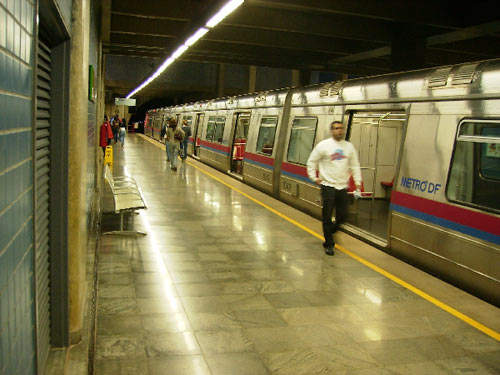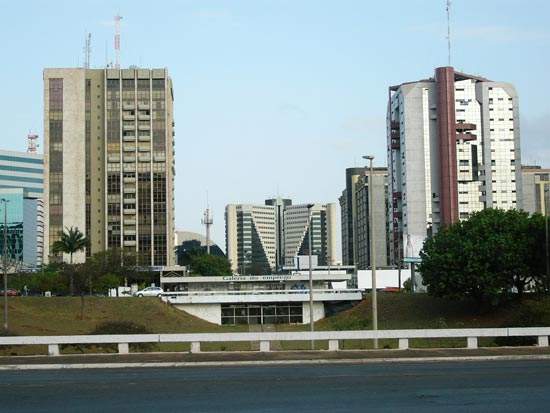Brasilia Metro is a two-line rail system that links Brazil’s capital Brasília to the satellite cities of the Federal District. Operated by Metro-DF, Brasilia Metro has been offering regular services since September 2001.
In March 2001, Brasilia Metro started operating a 32km line from Central station to Terminal Samambaia/Praça do Relógio with 11 stations. Commercial services of the metro started during September 2001.
In February 2002, Samambaia Sul and Arniqueiras stations were opened to traffic while Concessionárias station was opened in May 2004.
Praça do Relógio-Ceilândia Sul was provided with a shuttle service and service from Central station during 2006 and 2007. The 108 Sul station was opened in April 2008 and 112 Sul station in May 2009. South metro station 102-DF was inaugurated in June 2009. The Guará station was opened in 2010
The project
Brasilia Metro operates two lines called linha verde (Green line) and linha laranja (Orange line). The lines run parallel until Aguas Claras, the station where they share tracks through Asa Sul and Guará.
The 33km linha verde runs west from Central station through 24 stations to Taguatinga and Ceilandia. The 42km linha laranja extends from Central to Samambaia in south with 19 stations.
In June 2009, a contract was signed between the Government of the Federal District (Governo do Distrito Federal [GDF]) and Banco Nacional de Desenvolvimento Economico e Social (BNDES) to lend $260.3m to the government for funding the expansion and modernisation of the metro’s fleet.
GDF has invested about $7.3m in the subway to install 22 escalators at various stations.
Infrastructure
The system, with 29 stations, starts at Brasilia’s Bus Central Station and passes through a subway in Brasilia and Praça do Relógio, centre of Taguatinga. The subway has resulted in reduced travel times, noise, visual pollution and carbon emissions.
The metro mainly serves the largest satellite cities: Guará, Águas Claras, Samambaia, Taguatinga and Ceilândia. Residents of these cities mostly depend on public transport. The service with 20 four-car trains can carry 1,350 passengers.
The commercial speed of the metro is 45km/h and its track gauge is 1,600mm.
Rolling stock
Brasilia Metro has 29 stations, which are served by 20 four-car trains. In July 2009, operator METRO-DF awarded a €110m contract to Alstom to supply 12 train sets, each comprising of four Metropolis cars. The trains manufactured at Alstom’s Lapa site in São Paulo were delivered in June 2010. The fleet increased the capacity of the metro to 300,000 passengers a day.
The 48 Metropolis cars are made of stainless steel. are low-floored and have been fitted with illuminated information boards.
The contract awarded to Alstom also included the installation of an automatic train operation (ATO) system. The ATO equipment, which enabled the metro to reduce headways from 4.5 to three minutes, was fitted to the existing 20 train sets and the stations. The has ATO system eased overcrowding of the trains.
The ATO equipment, which will enable the metro to reduce headways from 4.5 to 3 minutes, will be fitted to the existing 20 train sets, in all the stations and along the entire length of the line. The ATO system is expected to ease overcrowding.
The future
In 2010, the first phase of a new light metro transport system was started in Brasilia. The Brasilia light metro transport system will start at Terminal South Wing and reach 502 North. It will be completed by 2014 and will connect to Juscelino Kubitschek International Airport Terminal North Wing.
Construction of a $140m station near the North Wing Regional Hospital is underway. In addition, a proposal is being considered to construct two more stations in Samambaia by investing $150m.









